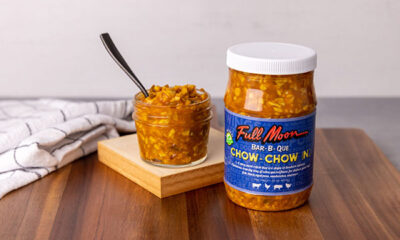Grilling Academy
Deli-ghtful Guide to Beefy Slices

In the world of deli meats, few selections are as beloved and versatile as pastrami, roast beef, brisket, and corned beef. Each of these meats has its unique preparation method, flavor profile, and traditional uses, yet they share some common culinary roots. Here’s a deep dive into what makes each of these meats special, how they’re prepared, and how they can be enjoyed.
Pastrami
Pastrami is a type of cured and smoked meat, typically made from the navel end of the beef brisket, although other cuts like the beef plate can be used. Pastrami originated from Eastern Europe, where it was known as “pastróma” in Romanian, which itself was influenced by the Turkish word “pastırma.” This preservation method was brought to the U.S. by Jewish immigrants.
Preparation
Curing: Pastrami starts with a brine cure. The brine usually includes salt, sugar, and spices, often including garlic, coriander, black pepper, paprika, cloves, and mustard seed and sometimes pickling spices.
Rubbing: After curing and drying and before cooking, it’s coated with a mixture of spices, which gives pastrami its distinctive flavor and crust. pastrami is heavily seasoned with a spice mix, often including pepper, coriander, mustard seeds, and sometimes paprika or garlic.
Smoking: The meat is then smoked at a low temperature for several hours, which not only gives it smoky flavors but also helps in preservation.
Steaming: Before serving, pastrami is usually steamed to achieve its characteristic tender, moist texture
Flavor and Texture
Pastrami has a robust, smoky flavor with a peppery spice rub. The texture is tender but can have a bit of chew depending on the cut and how it’s prepared.
Serving: It’s most famously known for being used in sandwiches, particularly the classic New York-style pastrami on rye with mustard. Pastrami can be served hot or cold, often with pickles or on platters with other deli meats.
Cultural Significance: Pastrami has become a staple in Jewish delis, particularly in New York City, but its popularity has spread worldwide. The preparation and consumption of pastrami are often part of cultural identity for many Jewish communities. Pastrami’s distinctive taste and preparation method make it a beloved ingredient in deli cuisine, offering a rich, complex flavor that has stood the test of time.
Make Pastrami at home- https://ruhlman.com/homemade-pastrami/
Roast Beef
Deli roast beef refers to beef that has been roasted and then thinly sliced for use in sandwiches or as part of a deli meat selection. Typically, roast beef for deli use comes from cuts like the eye of round, top round, bottom round, sirloin tip, or sometimes from the chuck roast, depending on the desired tenderness and flavor profile.
Preparation
Seasoning: The beef is often seasoned with just salt, pepper, and perhaps some herbs like rosemary or thyme.
Curing: Unlike the others, roast beef isn’t typically cured.
Roasting: It’s roasted at high heat initially for a crust, then the meat is roasted in an oven at a relatively low temperature for a long period to ensure it cooks evenly and remains juicy. The goal is to achieve a medium-rare to medium doneness for optimal tenderness and flavor, although this can vary based on preference.
Resting: After roasting, the beef is allowed to rest to let the juices redistribute through the meat.
Slicing: Once rested, the beef is sliced very thinly. This can be done by hand but is often done with a meat slicer to get even, thin slices ideal for sandwiches.
Flavor and Texture
Roast beef has a straightforward, beefy flavor, which can be enhanced with spices or rubs used before cooking. The roasting process caramelizes the exterior, adding depth to the taste. When properly prepared, deli roast beef should be tender and easy to chew, even though it’s served cold or at room temperature. The thin slicing also helps in maintaining tenderness.
While traditional roast beef is quite straightforward, there can be variations with different marinades or rubs to give it unique flavors, like garlic and herb, or even a smoky taste by finishing it in a smoker.
Serving: It’s a popular choice for sandwiches, often served cold with condiments like horseradish sauce or mustard, cheese, and vegetables like lettuce and tomato. Deli roast beef is commonly seen on charcuterie boards or in deli platters alongside other meats like ham, turkey, and cheeses.
Deli roast beef’s appeal lies in its simplicity and versatility, making it a staple in many delis and lunch counters across the world. Its mild flavor makes it a great base for a variety of sandwich combinations or a straightforward meat option for those who enjoy the pure taste of beef.
Want to make roast beef? This might help- https://www.fromvalerieskitchen.com/deli-style-roast-beef/
Brisket
Brisket is a cut of beef that comes from the lower chest or breast of the animal, right above the front legs. It’s sourced from the pectoral muscles of the cow, which support much of the animal’s weight, making brisket a tougher cut of meat due to the extensive use of these muscles. Deli brisket refers to brisket that has been prepared and sliced specifically for use in delis or for deli-style meals. Here’s what distinguishes deli brisket:
Preparation
Seasoning: It’s seasoned with salt, pepper, and possibly other spices or rubs that give it a distinctive flavor which could be influenced by the cultural or regional style of the deli (e.g., Jewish deli might use different spices than a Texas BBQ place).
Cooking: Deli brisket is typically cooked using methods that make it tender and flavorful. This could involve braising, smoking, or roasting, generally at a low temperature for an extended period to ensure the tough meat becomes tender.
Slicing: After cooking, the brisket is allowed to cool, then sliced very thinly. This slicing is crucial for deli brisket because it:
– Enhances tenderness, making the meat easier to eat cold or at room temperature.
– Increases the surface area for flavors to penetrate when used in dishes or sandwiches.
Flavor and Texture
When sliced for deli purposes, brisket can have a tender, sometimes melt-in-your-mouth quality if it has been cooked correctly, but there might still be some chewiness, especially in the leaner parts.
Serving: Deli brisket is a popular filling for sandwiches, often served on rye or other bread with mustard, pickles, and sometimes cheese or coleslaw. It is also a common meat that can be part of a deli platter alongside other meats, cheeses, and condiments.
Chopped or shredded brisket might be used in salads or as a topping for dishes like baked potatoes.
Flavor Profile:
The flavor of deli brisket can vary significantly based on the cooking method and seasoning. Smoked brisket will have a smoky taste, braised brisket might be more savory or even slightly sweet depending on the braising liquid, and roasted brisket can have a more straightforward beef flavor enhanced by spices.
Cultural Variations
Jewish Deli: Here, brisket might be seasoned with garlic, paprika, or other spices, then braised, and served with traditional accompaniments.
Southern BBQ: In this context, brisket is often smoked with a dry rub or mop sauce, featuring flavors like chili powder, black pepper, and sometimes a hint of sweetness.
Brisket’s unique characteristics, requiring long, slow cooking, have made it a beloved choice for those who appreciate the art of transforming a tough cut into something tender and flavorful. It’s versatile, used in everything from sandwiches to elaborate holiday feasts. Deli brisket is cherished for its rich flavor and the comforting, home-cooked meal feel it brings, even when served in the more casual setting of a deli. Its preparation involves a balance of achieving tenderness while ensuring the slices remain cohesive enough to serve, highlighting the chef’s skill in handling what is inherently a challenging cut of meat.
Check out this Pastrami Style Brisket- https://popularbbq.com/pastrami-style-brisket/
Corned Beef
Like pastrami, corned beef has roots in salt-curing methods used for preservation, popular in Irish and Jewish cuisines. The term “corned” refers to the large grains of salt, historically called “corns,” used in the curing process. This method preserved the meat before refrigeration was common. Corned beef is typically made from the brisket, which is an economical cut that benefits significantly from the tenderizing effects of slow cooking. However, other cuts like the round can also be used, particularly for corned beef intended for slicing.
Preparation
Curing: The most common modern method involves soaking the beef in a brine solution made of water, salt, sugar, and spices. This process can last from several days to weeks. Traditional dry curing is less common now, and involved rubbing the meat with salt and spices, then allowing it to sit for a period to cure.
Seasoning: common spices include mustard seeds, black peppercorns, coriander, allspice, bay leaves and cloves.
Boiling or Simmering: After curing, corned beef is usually simmered until tender, which can take several hours due to the toughness of the meat. This method is popular for dishes like corned beef and cabbage.
Baking or Roasting: Sometimes after boiling, it’s finished in the oven to bake, which can give it a crusty exterior.
Slicing: Once cooked, it’s sliced against the grain to maximize tenderness. For sandwiches, it’s often sliced thin; for meals, it might be cut into thicker slices.
Flavor and Texture
The curing process imparts a unique, savory flavor with a slight pinkish color due to the nitrite (curing salts). The texture, after cooking, should be tender, with a balance between the saltiness from the cure and the meat’s natural flavors.
A thread about corned beef you may be interested in- https://www.smokingmeatforums.com/threads/corned-beef-recipe.329390/
Cultural Significance
Irish-American: Corned beef and cabbage is a dish associated with Irish-American cuisine, especially for St. Patrick’s Day, although it’s not as commonly eaten in Ireland itself. The tradition of eating corned beef and cabbage is an American Irish custom that originated when Irish immigrants settled in the United States in the 19th century. In Ireland, a traditional St. Patrick’s Day meal is bacon and cabbage, or lamb.
Jewish Deli: Known as “corned beef” but often processed similarly to pastrami in some Jewish delicatessens, where it might be steamed and then served in sandwiches with mustard on rye bread.
Corned beef’s rich flavor and tender texture after cooking make it a beloved choice for various dishes, particularly in colder months or for celebratory meals. Its preparation allows for the transformation of a tough cut into something delicious and versatile, suitable for both traditional meals and modern culinary creations.
Similarities and Differences
All start with beef, but while pastrami and corned beef are cured, roast beef and brisket might not be. Curing adds flavor and preservation, which is crucial for pastrami and corned beef’s distinctive tastes. While pastrami and corned beef involve brining and then cooking methods like steaming or boiling, brisket and roast beef focus on roasting or smoking to tenderize and flavor the meat.
Flavor Profiles
Pastrami has a smoky, spicy flavor.
Roast Beef tends to be more straightforward, emphasizing the beef’s natural flavor with simple seasoning.
Brisket can range from the smokiness of Texas BBQ to the hearty, savory taste of braised Jewish dishes.
Corned Beef is known for its saltiness from the curing process, with a subtle spice from pickling spices.
Summary:
When it comes to savory meats, pastrami, roast beef, brisket, and corned beef are four popular options that often find their way onto sandwiches, platters, and various dishes. Though they may share some similarities, they each have distinct characteristics, preparation methods, and uses.
Each meat comes from different culinary traditions, from deli sandwiches to festive meals, but their preparation methods dictate their culinary applications. Pastrami and corned beef are deli favorites, roast beef fits into both fine dining and casual settings, and brisket is a BBQ and traditional Jewish cuisine staple.
Understanding these meats not only enhances one’s appreciation for them but also opens a world of culinary possibilities, from traditional recipes to innovative dishes. Whether you’re slicing into a pastrami on rye, carving a roast for Sunday dinner, savoring slow-cooked brisket, or enjoying corned beef with cabbage, each offers a unique taste of history and tradition.
-

 Accessories1 month ago
Accessories1 month agoThe Kick Ash Basket: Revolutionizing Charcoal Grilling
-

 Spices & Seasonings3 weeks ago
Spices & Seasonings3 weeks agoSpecial Shit Seasoning: Where Flavor Meets Humor
-

 Sides & Desert Recipes2 months ago
Sides & Desert Recipes2 months agoSizzle Meets Swig: Lager Than Life Combinations for Your BBQ
-

 Sides & Desert Recipes2 months ago
Sides & Desert Recipes2 months agoEggnog History and Recipes: Your Favorite Holiday Drink
-

 Cookery & Fire Schools3 weeks ago
Cookery & Fire Schools3 weeks agoThe Ultimate Chicken Marinade Collection
-

 Grilling Academy3 weeks ago
Grilling Academy3 weeks agoHow to Grill Chicken Like a Backyard Boss: Tips, Tricks, & Laughs
-

 Accessories3 weeks ago
Accessories3 weeks agoThe Ultimate Cast Iron Grilling Experience with the Lodge Sportsman Grill
-

 Grilling Academy3 weeks ago
Grilling Academy3 weeks agoThe Great Barbeque of Barbecue: A Sizzling Debate


